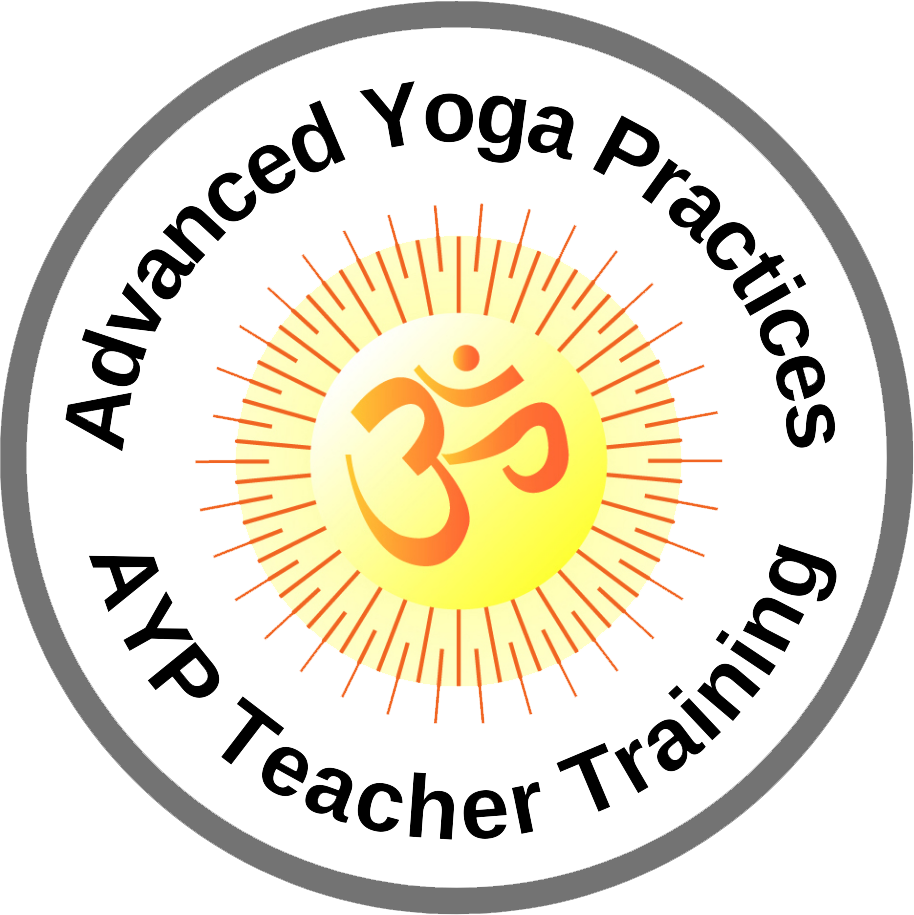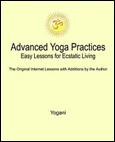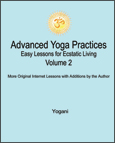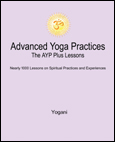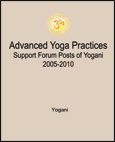|
|
Advanced Yoga Practices
Main Lessons
Note: For the Original
Internet Lessons with additions,
see the
AYP
Easy Lessons
Books.
For the Expanded and Interactive Internet Lessons, AYP Online Books,
Audiobooks and more, see AYP Plus.
Lesson 21 - Objects of
Meditation
(Plus)
(Audio)
From: Yogani
Date: Mon Dec 1, 2003 1:14pm
New Visitors: It is recommended you read from the beginning of the archive, as previous
lessons are prerequisite to this one. The first lesson is, "Why
This Discussion?"
Q: What is the difference between meditation on a
mantra, chakras, a religious icon, a candle, etc?
A: Meditation is the
bridge between attention on an object and the great beyond we know as bliss
consciousness without thoughts or external sensory experience. The goal is
to make that journey repeatedly, like clockwork, on a daily basis. The
technique we use is simple, yet delicate, relying on the natural ability of
our mind to become quiet. Other forms of meditation may not be so simple and
natural, and may involve focusing on intellectual meanings or on multiple
objects. This can bog down passage of the attention to the expanded realm of
bliss consciousness residing within us. This is not to say other forms of
meditation will not work. But in our approach, simplicity and efficiency are
at the forefront. This is an advanced method of meditation anyone can do. We
will discuss meditation on other objects from the point of view of the
method we are using here.
What is the difference
between meditating with our technique using a mantra, versus using chakras
(energy centers in the body), a religious icon or other physical objects?
Again, it is a matter of simplicity and efficiency. The goal is to bring the
attention beyond the thinking process, and, in doing so, take the attention
beyond outer sensory experience. The mind is the neurological process in us
that links consciousness with the outer world. It is a very intimate
connection. Our attention, engaged in the dynamics of the mind, is always an
inch away from experiencing the divine bliss of pure consciousness. When the
mind is allowed to come to rest, we are there. So we begin with the mind,
the most intimate connection to bliss consciousness we have. We begin
inside, so we can quickly and easily go deeply inside. If we were to begin
with a physical location in the body or a physical object, we could still go
deep. No question about it. But it is a longer journey, a more complicated
journey. The further outside we are when we start, the more physical,
intellectual and emotional baggage we have to shed on the way in. This is
also why we do not verbally utter the mantra during meditation, or give any
attention to meanings while meditating. It is an inner process right from
the start. By beginning meditation with a thought, using the specific
procedure, we bypass external obstacles in the nervous system that can bind
our attention. Ultimately we dissolve them naturally from the inside going
out, rather than trying to dissolve them from the outside going in, which is
not easy.
We begin with a thought, not focusing on any
meaning, just picking up the repetition of the thought of the mantra's sound
easily, on the edge of letting go. We let the mantra go its own way
naturally to less and less - this is the simplest and most efficient way to
dive into the infinite sea of bliss consciousness within us. Having done so
repeatedly, we come back out after twenty minutes soaked with peace and
bliss, achieving much purification during the process.
In time, the distance
between consciousness and outside experiences evaporates as the obstructions
become less and less. There was really no distance at all! Then it becomes
natural to experience many shades of bliss consciousness while gazing upon
chakras, religious icons, our loved ones, beautiful landscapes, scriptures,
or even a book on theoretical physics. When bliss consciousness has arisen,
everything is seen in terms of that. But this is not the procedure of
meditation. This is enjoying the fruit of meditation - living life with an
increasing appreciation of its many gifts. The rise of this appreciation
inspires us all the more to carry on with our practice.
The guru is in you.
See this complete
instructional lesson and all the expanded and interactive AYP Plus lessons
at:
http://www.aypsite.com/plus/21.html.
Related Lessons Topic Path
Discuss this Lesson in the AYP Plus Support Forum
Note:
For detailed instructions on deep meditation, see the
AYP Deep Meditation book,
and AYP Plus.
Previous | Next
|
|







